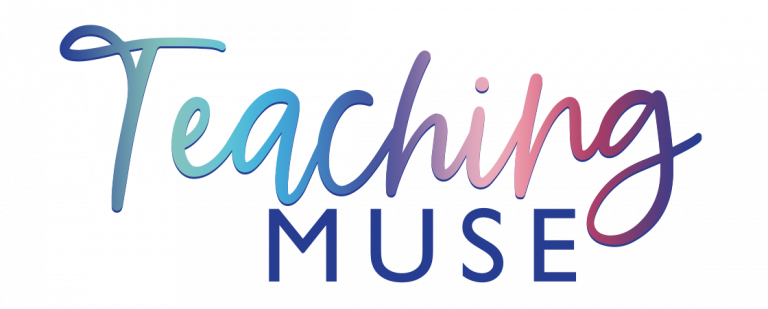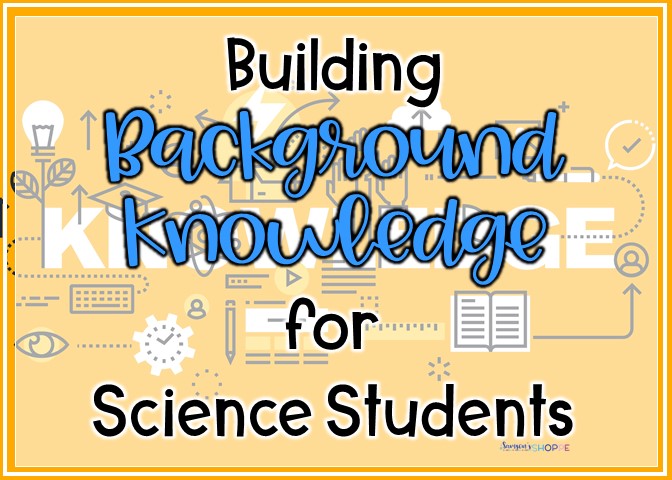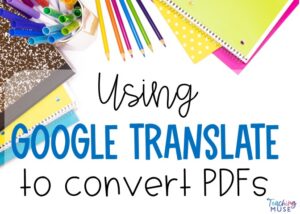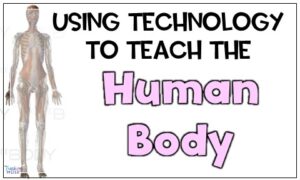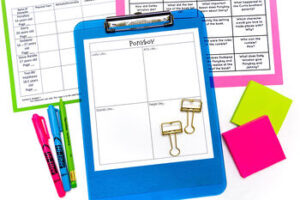What do you do with students who come into your science classroom without any background knowledge?
Lacking background knowledge in science can be a real problem and concern in the upper elementary and middle school classrooms. But, unfortunately, science often falls to the wayside in the primary and early elementary years, where reading and math are more prevalent.
Having a master’s degree in literacy, I realized that background information is necessary to bring students beyond the introductory level. In the science classroom, this is a concern because often, we are building upon student’s science background knowledge to delve deeper into a topic. So as an upper elementary or middle school science teacher, what can we do for students that come in with little to no understanding of a topic?
Here are 5 strategies to QUICKLY provide students with background information on a science topic:
Preassess before starting a unit
Give students a preassessment before starting a unit. Then, based on the preassessment results, you can provide students with video links, articles, or a fact sheet on your teacher page, during extra help time or as an extra credit assignment.
Instead of taking a class period to read through worksheets, I joined the digital age and created Edpuzzle videos using Screencast-o-matic. The videos feature me reading about the concept to the student. I also include explanations. These videos have been a game-changer in my classroom for my struggling readers. They take the pressure off of these students allowing them to focus on the content. Edpuzzle allows you to assess student comprehension through different forms of questioning throughout the video. This allows me to have a flipped classroom as this can be assigned for homework allowing students to come to class the following day with some background knowledge. Edpuzzle lets me skip the “boring” stuff and increases my ability to be hands-on in the classroom. I also use this as a grade in my grade book.
If you do not have access to technology, you can provide students with a printable to read after a test or for homework the night before. This strategy can also be used for students who do not have access to working technology at home.
Build background knowledge in science by making students responsible for their learning.
As you are teaching or when students are working collaboratively, keep post its around your room and encourage students to grab one and write down their areas of confusion on it. If you are using the first strategy, you can quickly point students in where they should go to clear up their confusion.
Use misconceptions to help understand a topic.
Every unit in science has misconceptions that, throughout the years, people have confused and think it true. Take those common misconceptions and use them as teaching points. Put students into collaborative groups and give each one a common misconception. As they work together, see if they can figure out why it is not true. This allows students to learn from one another, which many theorize strengthens their learning and leaves a lasting impression on them to retain the information better. These misconceptions can be revisited throughout the unit and can also be used for assessments.
Meet with your department to identify topics students need to know to be prepared.
This is probably the most challenging strategy because it requires other people to join you. An ideal situation would be to have a working science model from K-12. Having schools buy into why science is so important for our youngsters is important. If schools are taking the time to allow students to observe and investigate in Kindergarten, it should become easier and easier to build on their knowledge as they get to your grade level. A spiraled curriculum could benefit the entire school district.
I hope these strategies prove to be useful in your classroom. If they are, I would love to hear from you in the comments.
Need more science ideas?
